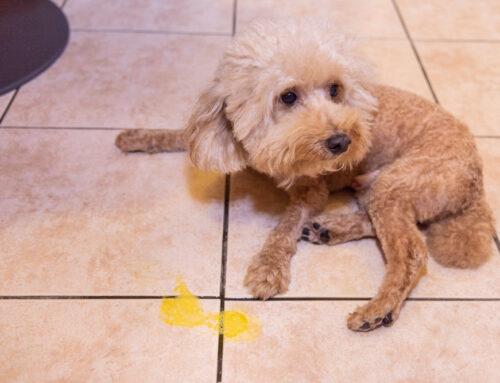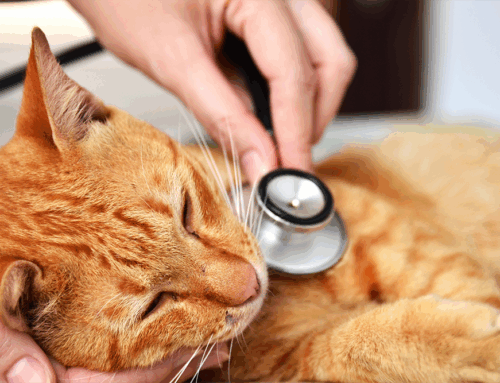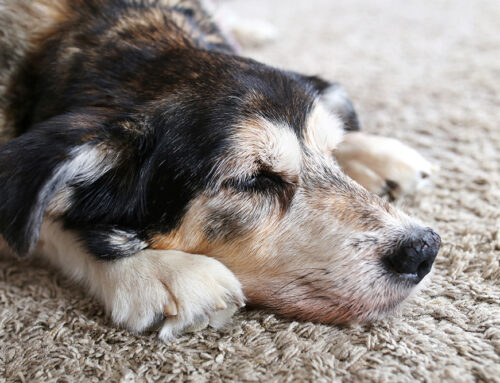When a pet is facing a serious illness or recovering from surgery, nutritional intake can become a challenge—and in some cases, a critical concern. At the Veterinary Emergency and Specialty Center of Northern Arizona, we regularly use esophagostomy tubes (E-tubes) to support dogs and cats that are unable to eat on their own. In this guide, we explain the purpose of E-tube placement, how the procedure works, and what pet owners need to know for successful long-term management.
What Is an E-Tube and When Is It Used?
An E-tube (esophagostomy tube) is a flexible feeding tube inserted through the skin into the esophagus, allowing liquid nutrition to bypass the mouth and upper throat. It is a safe and effective option when a pet is unable—or unwilling—to take in adequate nutrition orally.
Common Medical Indications:
- Oral or facial trauma, tumors, or dental disease
- Esophageal dysfunction, including strictures or megaesophagus
- Anorexia caused by systemic illness (e.g., liver disease, pancreatitis, renal failure)
- Neurological conditions affecting swallowing reflex
- Post-operative support, especially after maxillofacial surgery or radiation therapy
This method ensures controlled nutritional intake and medication delivery, allowing the underlying medical condition to be addressed without the added complication of malnutrition.
The Role of Nutrition in Healing
Inadequate nutrition is a major barrier to recovery. Malnourished pets face a higher risk of infection, delayed wound healing, muscle loss, and poor response to treatment. E-tubes help bridge the gap when oral feeding is not possible, ensuring your pet receives:
- Sufficient caloric intake
- Balanced electrolytes
- Protein and micronutrients essential for tissue repair and immune function
A proactive nutritional plan, initiated early, significantly improves treatment outcomes.
Signs That Nutritional Support May Be Needed
If your pet shows any of the following symptoms for more than 24 hours, consult a veterinarian:
- Complete refusal to eat
- Significant weight loss
- Weakness or lethargy
- Difficulty swallowing or excessive drooling
- Persistent vomiting or regurgitation
Timely intervention helps prevent secondary complications, including hepatic lipidosis in cats or progressive muscle wasting in dogs.
Contact us if you are unsure whether your pet may benefit from assisted feeding.
What to Expect: E-Tube Placement Procedure
Placing an E-tube is a minimally invasive surgery performed under general anesthesia. Here’s how the process typically unfolds:
- Preoperative Evaluation
Includes bloodwork, imaging, and physical assessment to confirm fitness for anesthesia and to tailor the feeding plan. - Surgical Placement
A small incision is made in the neck, and the tube is inserted into the esophagus and secured externally with sutures and a bandage. - Recovery and Instruction
Most pets recover quickly. You’ll receive detailed instructions on feeding, flushing the tube, and cleaning the site.
E-tube placement is generally well-tolerated and reversible. Once your pet resumes consistent oral intake, the tube can be removed without the need for further surgery.
Risks and How to Minimize Them
E-tube placement is a safe procedure, but like any medical intervention, complications are possible. These may include:
- Local infection or inflammation at the insertion site
- Tube dislodgement or clogging
- Skin irritation from bandages or tube movement
- Aspiration pneumonia, especially in patients with reflux or regurgitation
To reduce risk:
- Follow feeding and cleaning protocols exactly as prescribed
- Flush the tube before and after each use
- Monitor for any swelling, discharge, or signs of pain at the site
- Use an Elizabethan collar if your pet is likely to scratch or tamper with the tube
Home Care: What You Need to Know
Daily E-tube care is manageable with the right training and consistency. Key components include:
- Feeding Protocols: Use the veterinarian-approved diet in the volume and frequency recommended. Feed slowly and calmly to avoid nausea or aspiration. Learn more about feeding techniques here.
- Tube Flushing: Always flush the tube with warm water before and after each feeding to prevent clogging.
- Site Hygiene: Clean the insertion site daily with antiseptic solution. Re-bandage if needed.
- Monitoring: Keep a log of feeding volumes, tube function, and your pet’s weight and energy levels.
Your veterinary team will provide a feeding plan and schedule, as well as instructions for any medications administered through the tube. Learn more about e-tube cleaning and care

FAQs About E-Tubes
How long will the E-tube stay in place?
This depends on the condition being treated. Some pets need support for a few weeks; others for several months. Removal is straightforward once it’s no longer needed.
Can my pet eat by mouth while using an E-tube?
Yes—if your pet is willing and able to eat on their own, you can supplement meals as directed. The tube provides additional support, not a replacement for voluntary intake.
What if the tube comes out or is damaged?
Do not attempt to reinsert it. Cover the site with a clean dressing and contact your veterinarian immediately.
Supporting Your Pet’s Recovery
Managing your pet’s nutritional needs with an E-tube requires teamwork, clear instructions, and regular follow-up—but the results can be remarkable. Pets who are properly nourished recover faster, feel better sooner, and are more responsive to treatment.
Our team at the Veterinary Emergency and Specialty Center of Northern Arizona is available to answer your questions and provide support throughout your pet’s recovery. If you’ve been advised that your pet may benefit from an E-tube, or you’re managing one at home and need help, please don’t hesitate to reach out.
With the right tools, your pet can heal—and thrive.







Leave A Comment